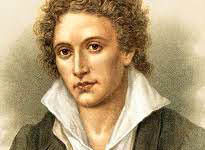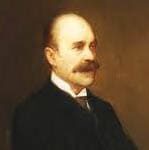Romantic Criticism-Chief Characteristics
Romantic Criticism-Chief Characteristics
Romantic Criticism-Chief Characteristics
‘Romanticism’ in literature began with the publication of Lyrical Ballads in 1798, by William Wordsworth and Samuel Taylor Coleridge. It arose as a reaction against its previous age i.e. the Neo-classical or Pseudo-classical or Augustan Age—which was, both in social life and in literary art, an age of intellect, reason, good-will, order, discipline, clarity, decorum, and traditional authority. The Augustan era tried to find out or perceive the truth and mystery of things and life by means of reason and intellect. But human beings can no longer remain satisfied with the restricted dogma of life and art. The taste of man changes with the change of time and with the change of social conditions. So the English no longer could remain satisfied with the restricted dogma of the Augustan Age. The commonly held assumptions about man, God, and the mystery of life were breaking down because the reason and intellect which prevailed during the Augustus era failed to answer the fundamental questions of the mystery of life. So as a substitute they took shelter in emotion and imagination as their safe guide to the perception of the truth of life. And as a result, the Romantic Movement in literature began. Sensibility, emotion, and imagination were the main basis or foundation of the literature of this Romantic Movement. William Wordsworth, Samuel Taylor Coleridge, P.B. Shelley, and John Keats were the main figures of the Romantic era. Besides being great poets, William Wordsworth, Coleridge and Shelly were the great critics of the Romantic Age. Romantic Criticism was totally a new thought and outlook in the history of literary criticism—because it obeyed no rules. It works on the basis of impression only. Hence Romantic Criticism is impressionistic and individualistic. There are some salient common features of romantic criticism, such as—
First, Romantic Criticism is independent of all critical theories. It ignores all the previous rules. It works on the basis of the impact or impression produced by any literary art in the mind of the critic.
Secondly, Romantic Criticism is individualistic, not typical. A piece of romantic criticism bears the stamp of the critic’s own likes and dislikes.
Thirdly, in Romantic Criticism emphasis is laid on imagination and emotion. The truth of things is tried to perceive through the imagination and emotion of the artist.
Fourthly, new attempts were done to define poetry, and poetry was considered not to be mere imitation or invention of life. Imagination was emphasized both as the basis of creation and judgment.
Fifthly, poetry was treated as a source of pleasure, beauty, and joy, not of instruction.
Sixthly, Romantic Criticism is concerned with the fundamental features of poetry such as—the nature of poetry, and functions of poetry but not merely with the problems of literary style, diction, or genre.
Seventhly, Romantic Criticism was creative. The critics expressed their views after entering imaginatively into the thoughts and feelings of the writers whose works they took to criticize.
Eighthly, Romantic Criticism emphasized on simplicity both in theme and treatment.
These are the common characteristics of romantic criticism. William Wordsworth contributed much to the rise of theories concerning Romantic Criticism. Coleridge was more practical. His Lectures on Shakespeare and Biographia Literaraia are two worth noting as critical works of the age. Next to them, came Shelley whose Defense of Poetry deals with the theme of nature, function, and definition of poetry.
To conclude it is to say that romanticism was much away from practical life—because it did not deal with the real problem of life but it depicted their ego and senses only ignoring the reality of life. 0 0 0.
Romantic Criticism-Chief Characteristics
You May Like:
‘Poetry is the Criticism of LIfe’ Mathew Arnold-An Explanation
N. B. The article ‘Romantic Criticism-Chief Characteristics’ originally belongs to the book entitled ‘ Essays on Literary Theory and Principle‘ by Menonim Menonimus.
Romantic Criticism-Chief Characteristics
Books on Literary Criticism by M. Menonimus:
- World Short Story Criticism
- World Poetry Criticism
- World Drama Criticism
- World Novel Criticism
- World Essay Criticism
- Indian English Poetry Criticism
- Indian English Poets and Poetry Chief Features
- Emily Dickinson’s Poetry-A Thematic Study
- Walt Whitman’s Poetry-A Thematic Study
- Critical Essays on English Poetry
- Tawfiq al-Hakim’s Novel: Return of the Spirit-An Analytical Study
- Tawfiq al-Hakim’s Novel: ‘Yawmiyyat Naib Fil Arayaf’-An Analytical Study
- Analytical Studies of Some Arabic Short Stories
- A Brief History of Arabic Literature: Pre-Islamic Period (500 AD-622 AD)
- A Brief History of Arabic Literature: Early Islamic Period (622 AD-661 AD) …
Related Search:
- Characteristics of Romanticism in Literature
- Characteristics of Romantic Criticism
- Literary Criticism of T S Coleridge
- History and Principles of Literary Criticism
- Critical Analysis of Coleridge’s Imagination and Fancy
- Coleridge’s Definition of Poetry
- Arnold’s Concept of Poetry as a Criticism of life
- Poetry Definition Types











